
Description
Vietnam War: POW/MIA Issues and Key Figures
POW/MIA Issues
1965:
- PFC Robert R. Garwood disappears from DaNang, South Vietnam. He would later be repatriated and convicted of collaboration.
1967-1968:
- Department of Defense Intelligence Information Report Memos on POW Camps: Memos are generated concerning the possible location, configuration, prisoner descriptions, and security forces of Prisoner of War Camps in Vietnam, Cambodia, and Laos.
January 1969:
- “Prisoners of War in Indochina RM 5729-1-ARPA” Report: A report is issued as part of ongoing DoD research, examining issues related to the release and exchange of POWs and civilian internees in the context of the Vietnam War’s eventual settlement.
- Richard T. Kennedy joins the National Security Council (NSC) as Director for National Security Council planning.
June 1970:
- Initial planning for the Son Tay Prison Camp rescue operation begins. Reconnaissance flights by SR-71 Blackbirds discover POWs and identify the camp’s isolated location.
November 20-21, 1970:
- Operation Kingpin (Son Tay Prisoner of War Rescue Operation): A joint force of USAF Special Operations/rescue personnel and U.S. Army Special Forces, supported by U.S. Navy Carrier Task Force 77, conducts a daring raid on the Son Tay prison camp, 23 miles northwest of Hanoi. Despite flawless planning, execution, and no U.S. casualties, no prisoners are found at the camp. Diversionary raids and extensive air support are part of the operation.
1971-1975:
- Richard T. Kennedy serves as Deputy Assistant to the President in the National Security Council staff.
July 1972:
- Jane Fonda visits North Vietnam: During her visit, she meets with seven American POWs and later claims they asked her to support George McGovern’s presidential candidacy. Her actions during this visit spark significant controversy and accusations of treason.
November 1972:
- “Laos Prisoner of War Camp Study” Report: The Department of the Navy Fleet Intelligence Center Pacific issues a 1,457-page report detailing the location, physical descriptions, and coordinates of POW camps in Laos.
1972-1978:
- U.S. Prisoners of War DIA Memos: The Department of Defense Intelligence issues memos containing various information concerning American POWs, including sighting reports, aircraft shoot-downs, and collaboration.
February 5, 1973:
- Baron 52 shot down over Laos: A U.S. Air Force EC-47 (call sign Baron 52) carrying eight crew members is shot down a week after the Paris Peace Accords. Remains of four crewmen are recovered, but the remains of the other four, including Sgt. Peters R. Cressman, are never found, leading to speculation of their survival and capture.
1979:
- PFC Robert R. Garwood is repatriated from the Socialist Republic of Vietnam.
1981:
- Robert R. Garwood is convicted at court martial of collaboration with the enemy.
1982:
- Bo Gritz plans “Operation Lazarus”: Former Green Beret Bo Gritz proposes and plans an operation to rescue American POWs in Laos. The Department of Defense critiques his activities and plans.
December 1984:
- Robert R. Garwood reports live sightings of American POWs in Vietnam.
July 29, 1988:
- President Ronald Reagan announces a comprehensive study of the POW/MIA issue: In an address to the National League of Families of American Prisoners and Missing in Southeast Asia, Reagan directs the study, which would culminate in a final report.
1989:
- “Americans Unaccounted for in Indochina – Statistical Data” is released: A statistical sheet on U.S. POW/MIAs and the U.S. position on live sightings is published.
June 1992:
- Government task force examines Garwood’s live sighting locations: A 30-day investigation is conducted in Vietnam based on Robert Garwood’s reports.
August 4-5, 1992:
- Hearings before the Select Committee on POW-MIA Affairs: Hearings on “Analysis of Live Sightings” are held.
- Richard T. Kennedy testifies before a closed hearing of the 1992 Select Committee on POW/MIA Affairs.
March 7, 1994:
- Cressman Family sends Rebuttal Packet to A.F.I.R.B.: The family of Sgt. Peters R. Cressman, missing from the Baron 52 incident, sends a rebuttal packet regarding their belief that he and three other crew members survived the crash and were captured.
1993, 1995, 1997:
- Defense Prisoner of War/Missing Personnel Office summary listings released: Reports providing statistical data on U.S. personnel and selected foreign nationals missing in Southeast Asia are published for these years.
June 1993:
- Investigation of Private Robert Garwood Report: The Department of State, DIA, USMC, DoD, and Naval Investigative Service issue a report on their investigation of Private Robert Garwood.
1994:
- Defense Intelligence Agency (DIA) Stony Beach POW & POW Camp Files conclude: The files, dating back to 1972, contain reports, intelligence, and information gained through human intelligence collection operations and live sighting investigations.
1998:
- “A Historical Analysis of United States POW/MIA Repatriation and Remains Recovery” study by MAJ Chandler C. Sherrell: This 100-page study investigates the historical record of repatriation and remains recovery during WWII, Korea, and Vietnam, concluding that “less than a full accounting occurred” despite stated intentions.
2000:
- Joint Report From Department of Defense and Central Intelligence Agency: A review of the 1998 National Intelligence Estimate on POW-MIA Issues and charges from “A Critical Assessment” is released.
2010:
- “JANE FONDA: Repercussions of her 1972 Visit to North Vietnam” document released: This document provides a historical account of Jane Fonda’s controversial visit, her actions, words, and political alliances, and the ongoing debate surrounding accusations of treason.
March 11, 2014 – February 22, 2019:
- Department of Defense Vietnam War Statistical Reports: The DoD, Washington Headquarters Service, and Department of State issue reports on the current numbers of Americans unaccounted for in Southeast Asia.
May 6, 2019:
- Various “U.S. Accounted-For” and “U.S. Un-Accounted-For” reports released: These include detailed listings of POWs, escapees, returnees, and recovered remains, broken down by service branch, name, and state.
Cast of Characters
- Sgt. Peters R. Cressman: Radio operator of Baron 52, a US Air Force EC-47 shot down over Laos on February 5, 1973. His remains were never found, and his family believes he survived and was taken captive, possibly to the USSR.
- Jane Fonda: Actress and anti-war activist who visited North Vietnam in July 1972. Her visit, during which she met with American POWs and made controversial statements, earned her the moniker “Hanoi Jane” and led to accusations of betraying American troops and committing treason.
- PFC Robert R. Garwood, USMC: An American Marine who disappeared from DaNang, South Vietnam, in 1965. He was repatriated in 1979 and subsequently convicted of collaboration with the enemy in 1981. In 1984, he reported live sightings of American POWs, leading to a government task force investigation in 1992.
- Brig. Gen. Donald Blackburn: U.S. Army Special Assistant for Counterinsurgency and Special Activities, working directly for the Chairman of the Joint Chiefs of Staff. He was a key figure in the planning of Operation Kingpin (Son Tay raid), advocating for a crash-landing into the prison to rescue all POWs.
- Bo Gritz: A former Green Beret who planned “Operation Lazarus” in 1982, an alleged attempt to rescue American POWs in Laos. His activities were critiqued in Department of Defense memos.
- Al Haig: Deputy to Henry Kissinger in the National Security Council. Richard T. Kennedy’s direct boss when Kennedy joined the NSC in 1969.
- Richard T. Kennedy: Director for National Security Council planning (1969) and Deputy Assistant to the President in the National Security Council staff (1971-1975). He provided valuable insight into the Nixon and Ford administrations’ views on POW/MIA matters during his testimony before the 1992 Select Committee on POW/MIA Affairs.
- Henry Kissinger: U.S. Secretary of State during the Son Tay raid planning. He questioned the raid’s success rate during a briefing.
- Mike McKinney: Co-author of the 2001 book “Chariots of the Damned.” He described the Son Tay Raid as “the best example of flawless planning, preparation and execution.”
- President Richard Nixon: U.S. President during a significant period of the Vietnam War. His administration’s views on POW/MIA matters were discussed by Richard T. Kennedy.
- President Gerald Ford: U.S. President following Nixon. His administration’s views on POW/MIA matters were discussed by Richard T. Kennedy.
- President Ronald Reagan: U.S. President who, in 1988, directed a comprehensive study of the POW/MIA issue, which culminated in a final interagency report issued the day before he left office.
- MAJ Chandler C. Sherrell: Author of the 1998 study “A Historical Analysis of United States POW/MIA Repatriation and Remains Recovery,” which concluded that the U.S. fell short of achieving a “fullest possible accounting” for its service members.
- Congressman Lester L. Wolff: Interviewed Robert R. Garwood as part of the investigation into his case.
- Congressman Benjamin A. Gilman: Interviewed Robert R. Garwood as part of the investigation into his case.
Vietnam War: Department of Defense POW/MIA Documents
Records from the Department of Defense Concerning Prisoners of War and Missing in Action from the Vietnam Conflict
This collection encompasses 12,379 documents originating from the U.S. Department of Defense, addressing matters related to Prisoners of War (POW) and Missing in Action (MIA) personnel in Southeast Asia connected to the Vietnam War. The period covered by these records spans from 1965 through 2019. The compilation features:
Statistical Analyses from the Department of Defense Regarding the Vietnam War (March 11, 2014 – February 22, 2019)
One hundred pages comprise reports from the U.S. Department of Defense, its Washington Headquarters Service, and the Department of State, outlining the contemporary figures of American individuals still missing in action within the Southeast Asian region.
Files Pertaining to Prisoners of War and POW Camps from the Defense Intelligence Agency’s (DIA) Stony Beach Unit
This section contains 2,716 pages of comprehensive reports. The content originates from the years 1972 through 1994. The Defense Intelligence Agency (DIA) operates a Honolulu-based team, known as Stony Beach, stationed at Hickam Air Force Base, whose singular mission is to facilitate the gathering of intelligence on Prisoners of War and Missing in Action through human source collection activities. A significant portion of this intelligence is derived from interviews conducted across various locations in Southeast Asia. Furthermore, Stony Beach conducts inquiries into verified sightings of individuals in Laos, Vietnam, and Cambodia. The documents encompass: Defense Intelligence Agency reports from the early 1970s, which provide analytical insights, physical descriptions, geographical locations, architectural diagrams, cartographic representations, and hand-drawn sketches pertaining to numerous prisoner-of-war facilities. Also featured are DIA data sheets detailing individuals in Southeast Asia who have submitted accounts of “verified sightings” and intelligence regarding human remains. There are also Defense Intelligence Agency memorandums that compile data acquired from alternative agencies, including the Central Intelligence Agency. Correspondence originating from the Joint Casualty Resolution Center is also included. Notable facilities for which these documents contain intelligence include: Son Tay, Bat Bat Prison, Xom Ap Lo PW Camp, Pho Lu Prison, Reeducation Camp 1 in Hoang Lien Son Province, Ha Tay Reeducation Camp, Tra Noc Reeducation Camp, Ha Son Binh, Lai Xa Prison, Dan Hoi Barracks, Yen Bai Camp, Tan Lap Reeducation Camp, Thanh Phong Prison, and Quyet Tien Prison.
Assessment of Prisoner of War Camps within Laos
This segment consists of a 1,457-page report from November 1972, produced by the Department of the Navy’s FIntelligence Center Pacific, which details the coordinates of prisoner of war sites across. It furnishes spatial descriptions, geographical coordinates of these camps, and images derived from aerial reconnaissance (though the mechanically replicated photographs are only faintly perceptible).
Indochina’s Captives: Report RM 5729-1-ARPA
This is a January 1969 document, forming part of the ongoing investigative efforts by the Department of Defense focused on the diverse military and political elements involved in concluding the Vietnam War. It was anticipated that the release and reciprocal exchange of both military captives and civilian detainees would emerge as a paramount concern in the ultimate resolution of the conflict. This analysis explores critical considerations necessary for developing an effective policy concerning the repatriation of prisoners of war.
Family Consultations – Department of Defense Account of Meetings with Relatives of POW/MIA Service Members
This collection encompasses 1,184 pages of documentation summarizing meetings held with 269 family members of personnel designated as Prisoners of War or Missing in Action. Each report contains a concise overview of the details related to individual cases that were shared with the next of kin.
Department of Defense Records Pertaining to the Barron 52 – Peters R. Cressman Incident
The file collection consists of 548 pages specifically concerning the Barron 52 — Peters R. Cressman matter. Sergeant Peter R. Cressman served as the radio dispatcher aboard the Baron 52 aircraft.An EC-47 aircraft belonging to the United States Air Force, identified by the call sign Baron 52, crashed in Laos on February 5, 1973. This incident, involving a crew of eight, occurred seven days after the Paris Peace Accords formally concluded America’s participation in the Vietnam War. While the remains of four service members were retrieved from the wreckage, the other four crew members remain unaccounted for. Relatives of the missing individuals, along with certain advocates for prisoners of war and those missing in action, theorize that these four survived the incident, were captured, and potentially transported to the Soviet Union. A Rebuttal Packet, submitted by the Cressman Family to the A.F.I.R.B. on March 7, 1994, is also part of this documentation.
Operation Kingpin: The Son Tay Prisoner Rescue Mission
This compilation features a preliminary report detailing Operation Kingpin’s strategy, alongside two subsequent analyses chronicling the mission’s execution. From November 20th to 21st, 1970, a combined military contingent, comprising specialized personnel from the United States Air Force (including Special Operations and rescue units) and U.S. Army Special Forces, executed a bold assault on the Son Tay prison facility. This operation, backed by U.S. Navy Carrier Task Force 77, targeted a site less than twenty-four miles outside Hanoi in North Vietnam. The primary goal was to liberate up to one hundred American prisoners believed to be incarcerated at the location. Surveillance missions conducted by SR-71 Blackbird aircraft not only confirmed the presence of the POWs but also revealed the camp’s remote and barren setting, despite its proximity—just twenty-three miles northwest—to Hanoi. The living circumstances for the prisoners of war were dire. Preliminary efforts to devise a prisoner rescue strategy commenced in June 1970. Intelligence indicated that the Son Tay captives were transmitting signals to aid in shaping a rescue plan; however, Brigadier General Donald Blackburn of the Army, serving as Special Assistant for Counterinsurgency and Special Activities under the Chairman of the Joint Chiefs of Staff, conceived an alternative approach. Despite acknowledging that the prisoners’ proposed signals for a rescue near Mount Ba Vi, a frequent site for POW work details, showed strong potential for success, he advocated for an operation that would involve a direct, controlled impact into the prison compound to free all inmates, not just a select group. Before the assault, during a debriefing provided to Secretary of State Henry Kissinger, his concluding inquiry was, “What will be the outcome if this mission does not succeed?” He received assurances that the operation possessed a 95 to 97 percent likelihood of success, attributed to air crews accumulating 697 hours and 268 sorties of flight time, and the entire mission having undergone 170 rehearsals. The attacking contingent, transported by six ARRS helicopters and two C-130 planes, covered a distance of 400 miles from their Thai bases to Son Tay. Concurrent with a diversionary attack carried out by U.S. Navy aviators, coordinated air operations from seven air bases and three aircraft carriers, involving both USAF and Navy assets, provided crucial support, including mid-air refueling, suppression of surface-to-air missiles, fighter protection, direct air support for ground troops, advanced warning, communication assistance, and intelligence gathering. Even though no captives were discovered within the compound, the incursion is nonetheless regarded as an outstanding achievement in terms of the projection, insertion, and retrieval of a 92-person American assault team.Fifty-six Army troops and Air Force members completed the mission without incurring any casualties. According to Mike McKinney, co-author of the 2001 publication “Chariots of the Damned,” the Son Tay Raid, a special operations undertaking, “remains unparalleled as the prime illustration of perfect planning, preparation, and implementation.”
U.S. Prisoners of War DIA Memos
This collection comprises 478 pages of intelligence memoranda from the Department of Defense, dated between 1972 and 1978, pertaining to American prisoners of war. Around 240 of these pages are legible. The content includes diverse details like reports of prisoner sightings, downed aircraft incidents, and instances of collaboration.
U.S. Prisoners of War Camps DIA Memos
There are 236 pages of Department of Defense intelligence reports and memos, generated between 1967 and 1968, addressing the potential sites of POW camps in Vietnam, Cambodia, and Laos. Roughly 170 pages out of this total are readable. These documents offer intelligence details including geographical coordinates, layout of the camps, descriptions of detainees, and information on the security personnel.
Abstract of Deposition of Honorable Richard T. Kennedy at POW/MIA Hearings
This is a written record of Richard T. Kennedy’s testimony given during a private session of the 1992 Select Committee focusing on POW/MIA matters. Richard Kennedy was appointed Director for National Security Council planning at the National Security Council in 1969. He reported to Al Haig, who, in turn, served as Henry Kissinger’s second-in-command. From 1971 to 1975, Richard Kennedy held the position of Deputy Assistant to the President within the National Security Council staff. This role enabled him to provide the committee with significant perspectives on how the Nixon and Ford administrations regarded POW/MIA issues.
Bo Gritz’s Operation Lazarus
This collection includes a series of heavily edited Department of Defense memoranda that evaluate the actions of the ex-Green Beret, Bo Gritz. Furthermore, it contains Gritz’s own blueprint for his 1982 “Operation Lazarus,” which he claimed was an effort to free American POWs held in Laos.
Final Interagency Report of the Reagan Administration
This document consists of 19 pages from a report released by the Reagan White House on the day preceding President Reagan’s departure from office. On July 29, 1988, during his address to the National League of Families of American Prisoners and Missing in Southeast Asia, President Ronald Reagan stated that he had ordered a thorough examination of the POW/MIA matter to be undertaken.
The Case of PVT Robert R. Garwood, USMC
This refers to the investigation concerning Private Robert R. Garwood, presented as a report to the Assistant Secretary of Defense for Command, Control, Communication, and Intelligence (ASD/C3I). It is a report from June 1993 detailing the inquiry into Private Robert Garwood, carried out by the Department of State, the Defense Intelligence Agency (DIA), the United States Marine Corps (USMC), the Department of Defense, and the Naval Investigative Service. Private First Class Robert R. Garwood went missing from Da Nang, South Vietnam in 1965. He was returned to his home country from the Socialist Republic of Vietnam in 1979. A military court found him guilty of cooperating with the enemy in 1981. Garwood stated in December 1984 that he had personally witnessed American POWs alive in Vietnam. A government-appointed task force spent a month in Vietnam in June 1992, investigating the sites where Garwood claimed to have seen live POWs. The documentation comprises a conclusive report and a sworn testimony from Garwood, collected by U.S.A Senate Select Committee on POW/MIA Affairs debriefing from Marine Corps Intelligence, an interview conducted by Congressmen Lester L. Wolff and Benjamin A. Gilman, and their testimony provided to the Subcommittee on Asian and Pacific Affairs of the U.S. House of Representatives. This section presents statistical data regarding Americans not accounted for in Indochina.
A 1989 statistical document addresses U.S. prisoners of war and missing in action, and delineates the United States’ official stance on reported live sightings. It includes lists of U.S. Personnel and selected Foreign Nationals who went missing in Southeast Asia during 1993, 1995, and 1997.
Summary listings from the Defense Prisoner of War/Missing Personnel Office detail U.S. personnel and selected foreign nationals designated as missing in Southeast Asia for the years 1993, 1995, and 1997. The content of these reports encompasses various sections, such as a file identification number, the individual’s name, their current status, the date they disappeared, their military branch of service, their rank at the time of their loss, their race, the last known latitude and longitude coordinates of their disappearance location, the country where they were lost, a vehicle identifier if a vehicle was linked to the incident, a REFNO incidence reference number, the specific time of the occurrence, and the date any remains were repatriated.
JANE FONDA: Consequences of her 1972 Trip to North Vietnam (2010)
Jane Fonda undertook a visit to North Vietnam in July 1972. Her conduct during that notorious journey led to her acquiring the epithet “Hanoi Jane.” An abstract details that, while in Hanoi, Fonda also held discussions with seven American POWs and subsequently stated they asked her to convey to their friends and family support for presidential candidate George McGovern; their apprehension was that they would not be released during a Richard Nixon presidency. Whispers circulated, and still persist, alleging she betrayed them by receiving confidential messages and subsequently delivering them to the North Vietnamese. The POWs who were present, however, have disclaimed that this event ever happened. Many individuals believe she acted disloyally towards American service members and the United States; even after nearly four decades, Vietnam veterans still hold animosity towards the woman. A factual, historical narration of her actions, pronouncements, and political associations while in Hanoi offers clarity concerning the strong emotional responses that remain undiminished. Her behavior also illustrated the often-subtle boundary between anti-war beliefs and an act of betrayal. Furthermore, despite her assertions that her role was merely that of a peace-seeking antiwar activist, the ongoing discussion continues as to whether she committed an act of treason by offering assistance and comfort to the adversary.
A Historical Examination of United States POW/MIA Repatriation and Remains Recovery (1998)
This is a one-hundred-page academic work by Major Chandler C. Sherrell. This investigation explores the historical documentation related to the return of American service members and the retrieval of bodies following World War II, the Korean War, and the Vietnam War. The duty of accounting for American military personnel has been declared a matter of utmost national importance, with the promise that the most comprehensive accounting possible would be achieved. In reality, the outcomes of U.S. policy do not align with the stated objectives. This paper particularly examines evidence from historical records that demonstrates a less than complete accounting transpired.
Analysis of Live Sightings – Hearings held before the Select Committee on POW-MIA Affairs on August 4 and 5, 1992
Case Evaluations (Cases 0011 to 1982)
An undated document comprising approximately 80 individual instances relating to POW-MIA cases, identified by numbers ranging from 11 up to 1982.A collaborative publication from the Defense Department and the Central Intelligence Agency, released in 2000.
An evaluation of the 1998 National Intelligence Estimate concerning matters of Prisoners of War and Missing in Action, along with scrutiny of allegations presented in ‘A Critical Assessment’.
ADDITIONAL RESEARCH PUBLICATIONS ARE COMPRISED OF:
A concise overview detailing four decades of observation regarding former Vietnam War captives, highlighting health and death outcomes.
Health conditions and physical harms experienced by Prisoners of War during the Vietnam conflict, specifically focusing on Army personnel.
Re-examination of health issues and injuries among Vietnam War Prisoners of War, with a focus on risk elements for Navy service members.
Further analysis of injuries and ailments encountered by Vietnam War POWs, examining the risk factors specific to Marine Corps members.
A renewed investigation into the health problems and wounds sustained by Vietnam War Prisoners of War, concentrating on Air Force vulnerability factors.
A comprehensive look at the injuries and illnesses affecting Vietnam War POWs, considering collective risk factors across all service branches.
The immediate and enduring impacts of being held captive on veterans from the Vietnam War.
The challenges faced by families of individuals held as prisoners of war.
An assessment of the families of American Navy personnel captured during the Vietnam War, conducted half a decade following their reunion.
An examination of the conduct of American Prisoners of War in the Vietnam conflict: attributing success to sufficient preparation or inventive command? Also, an analysis of the influence of groupthink, political considerations, and the choice to undertake the Son Tay rescue mission.
The hardships endured by American Prisoners of War in both Korea and Vietnam.
Mental health disorders observed in American Prisoners of War upon their return, and how these relate to their period of detainment and various demographic characteristics.
The experiences and perseverance of those held as Prisoners of War, specifically focusing on the American POW journey.
An analysis of the dietary consumption among returning U.S. Army, Navy, and Marine Corps service members who were Prisoners of War during the Vietnam conflict.
Project CHECO’s report on Southeast Asia, covering collaborative efforts for personnel retrieval in the region.
Data from May 6, 2019, on accounted-for American individuals from the Vietnam War, including Prisoners of War, those who escaped, those who returned, and recovered remains, specifically for the United States Air Force.
Details from May 6, 2019, regarding U.S. Army personnel from the Vietnam War who have been identified or located, encompassing former Prisoners of War, individuals who eluded capture, those who came back, and human remains that were found.
Information as of May 6, 2019, concerning United States Marine Corps members from the Vietnam War who have been confirmed, including captured soldiers, those who broke free, those who came back from captivity, and human remains that were recovered.
Documentation from May 6, 2019, on U.S. Navy personnel from the Vietnam War whose status has been resolved, including former Prisoners of War, those who successfully fled, individuals who made it back, and recovered human remains.
A list, organized alphabetically by name as of May 6, 2019, of U.S. personnel from the Vietnam War whose fate has been determined, including former captives, escapees, those who returned, and recovered human remains.
A compilation, arranged by state of origin as of May 6, 2019, of U.S. individuals from the Vietnam War whose whereabouts or status are confirmed, encompassing Prisoners of War, those who got away, those who came back, and recovered human remains.
An alphabetical listing by name, updated May 6, 2019, of U.S. service members captured during the Vietnam War who successfully broke free from their confinement.
An alphabetical registry, current as of May 6, 2019, of U.S. personnel from the Vietnam War whose status remains unresolved, including former Prisoners of War, those who escaped, returnees, and recovered remains.
A compilation, organized by state, as of May 6, 2019, of U.S. individuals from the Vietnam War whose status is still undetermined, comprising Prisoners of War, those who fled, those who re-entered service, and recovered human remains.
A report from May 6, 2019, outlining United States Air Force personnel from the Vietnam War whose status remains unconfirmed, including former captives, those who broke free, those who made it back, and recovered human remains.
Documentation as of May 6, 2019, concerning U.S. Army personnel from the Vietnam War whose fates are still unknown, covering former Prisoners of War, those who fled, those who returned, and human remains that were found.
A list, current as of May 6, 2019, of U.S. Navy personnel from the Vietnam War whose status has not yet been resolved, encompassing Prisoners of War, those who successfully escaped, individuals who came back, and recovered human remains.
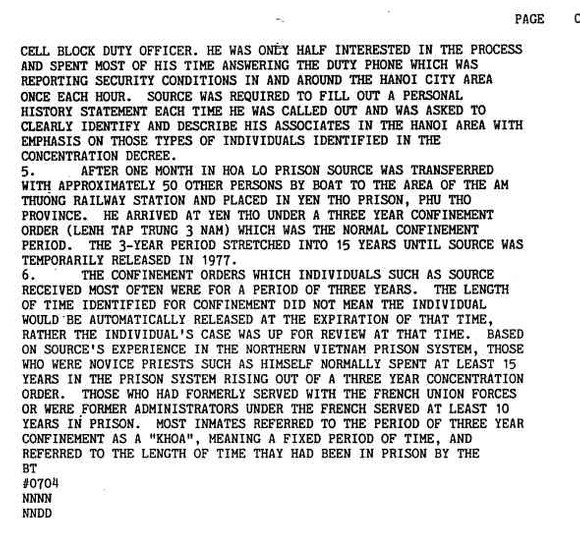

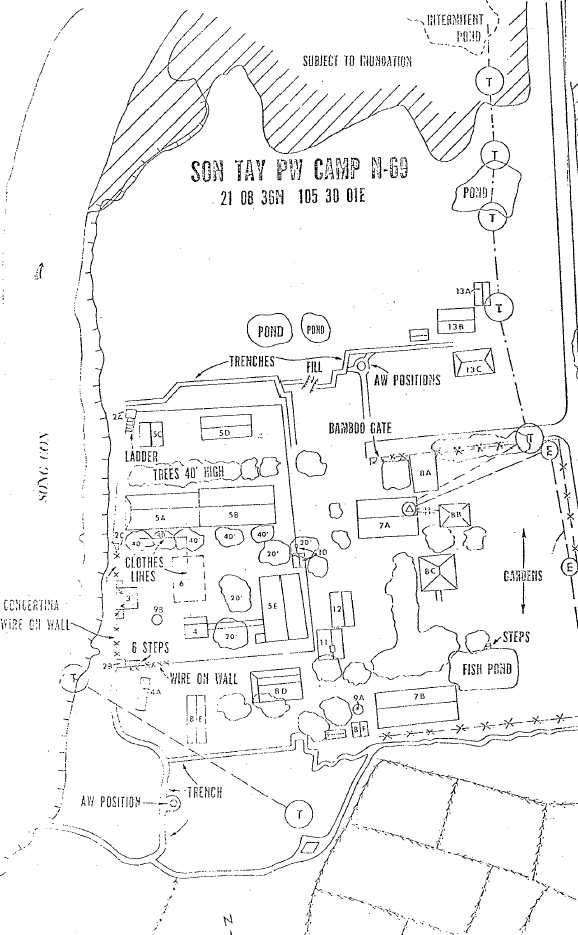

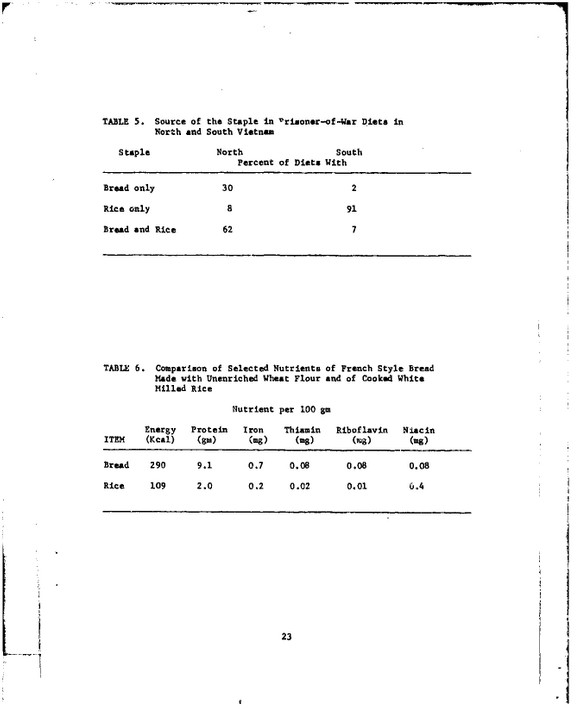
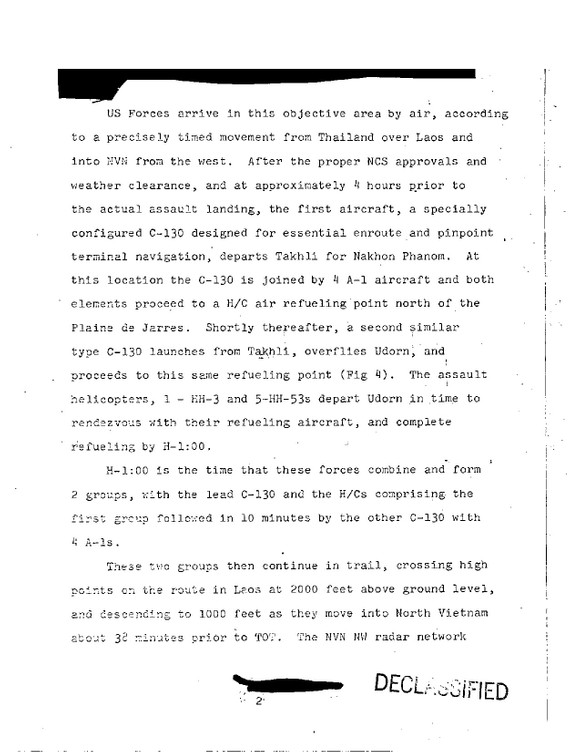
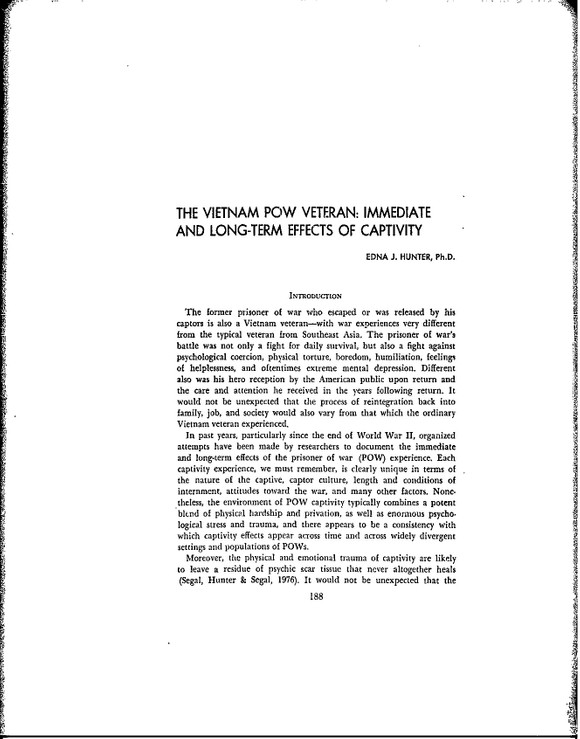
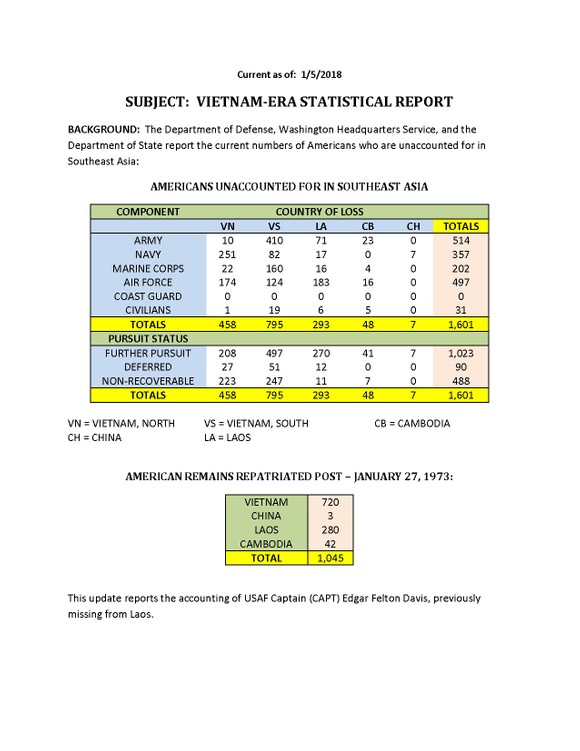
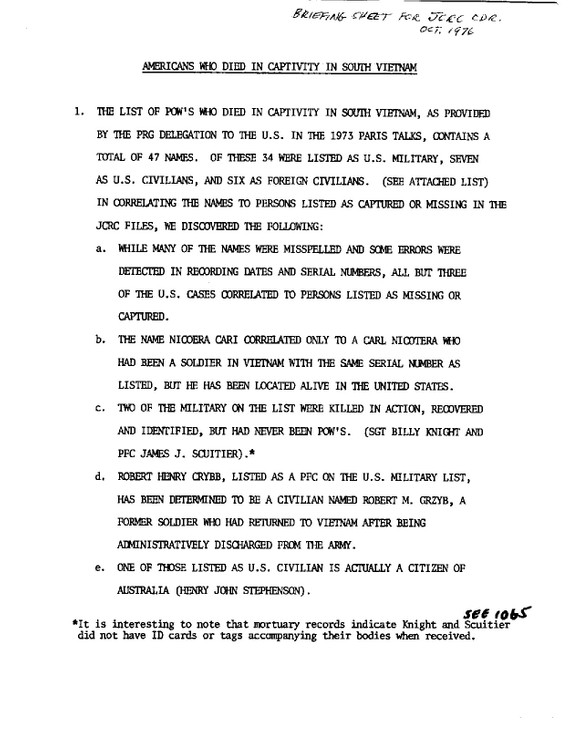
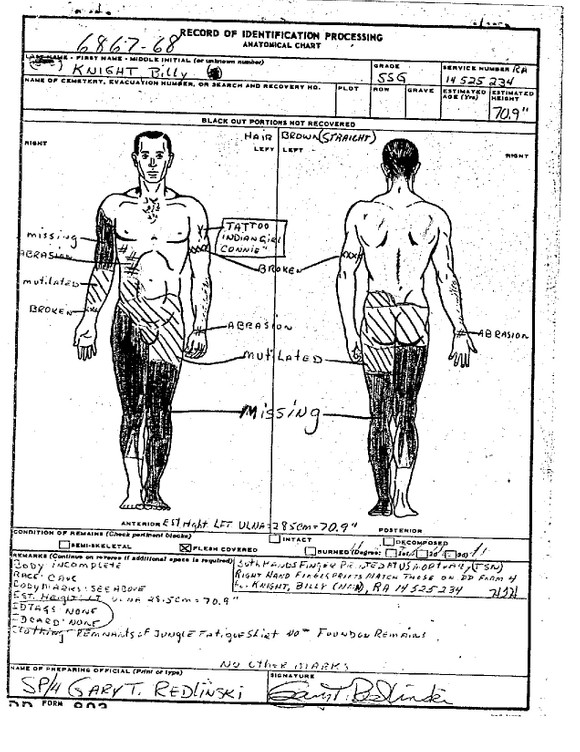

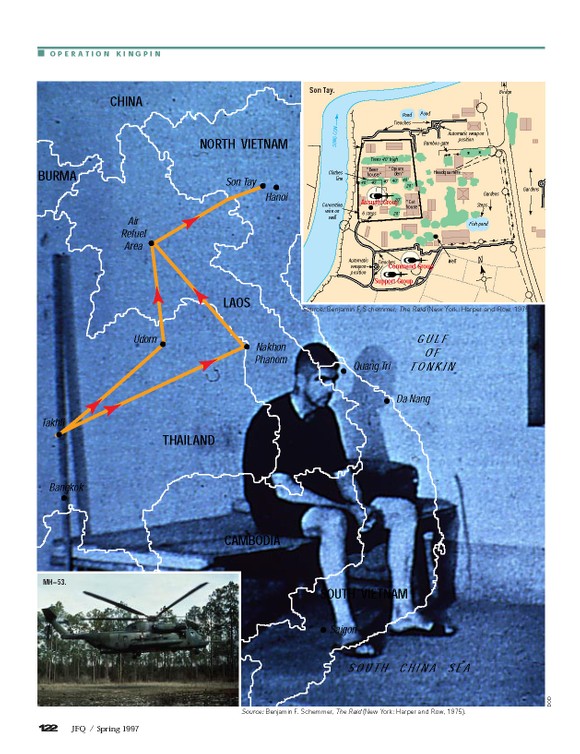
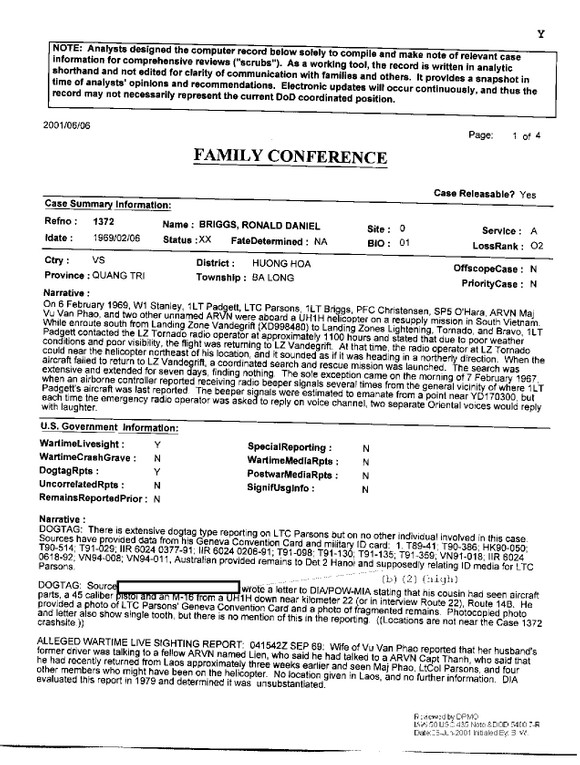

Related products
-
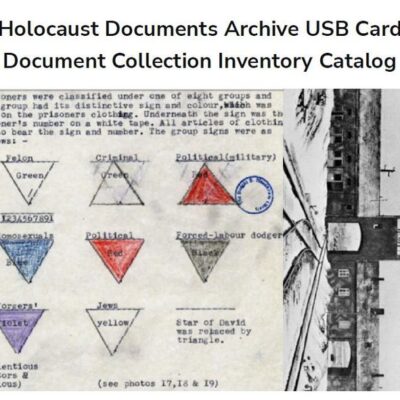
Holocaust Document Archive PDF file – Inventory Catalog of Document Collection
$3.94 Add to Cart -
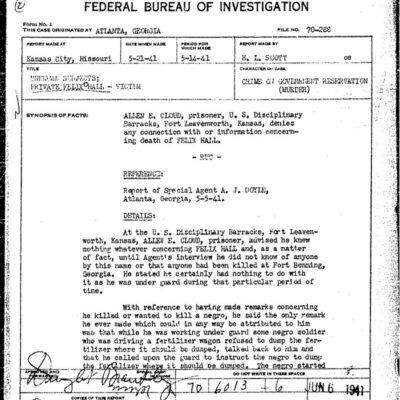
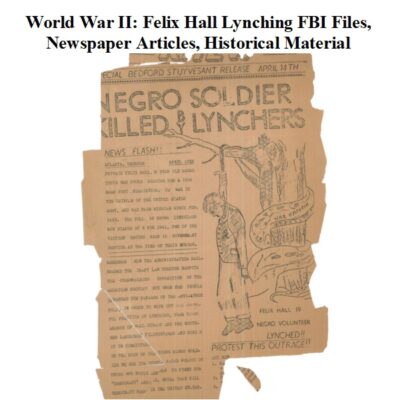
World War II: Felix Hall Lynching – FBI Files, Articles, Historical Records
$9.99 Add to Cart -
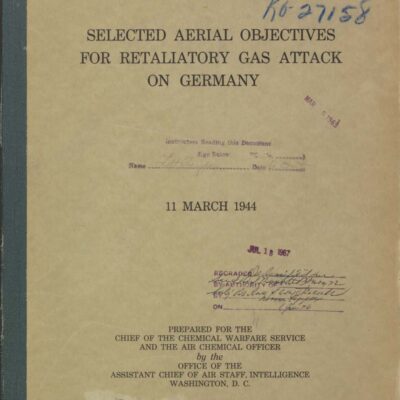
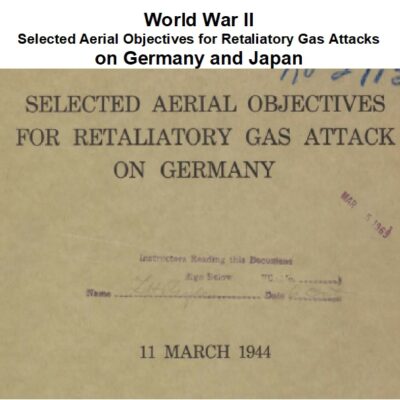
World War II: Targeted Aerial Objectives for Retaliatory Gas Attacks on Germany and Japan
$3.94 Add to Cart -
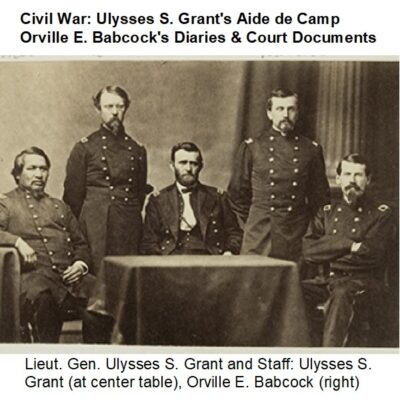
Civil War Ulysses S. Grant’s Aide de Camp Orville E. Babcock’s Diaries & Court Documents
$3.94 Add to Cart